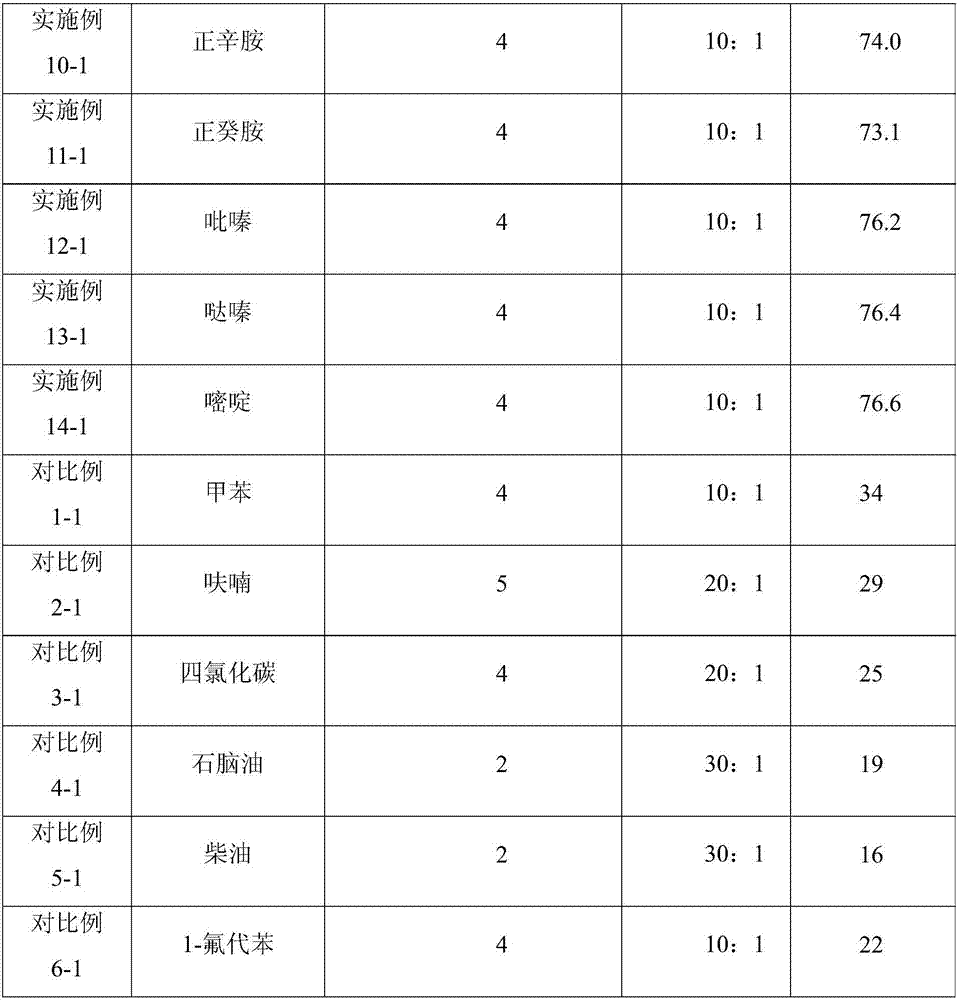Plug removing and inhibiting method in viscous oil recovery and application of nitrogen containing organic compounds taken as plug removing and inhibiting agent in viscous oil recovery
A technology of organic compounds and nitrogen heterocyclic compounds, which is used in the application field of nitrogen-containing organic compounds as plugging inhibitors in heavy oil production, and can solve the problem of poor effect of precipitates with high asphaltene content and asphaltene dissolution Poor, unable to meet the needs of production, etc., to achieve the effects of inhibiting the formation of blockages, good dissolution and removal effects, and obvious effects of blockage removal and suppression
- Summary
- Abstract
- Description
- Claims
- Application Information
AI Technical Summary
Problems solved by technology
Method used
Image
Examples
Embodiment 1-1~ Embodiment 14-1
[0044] Example 1-1 to Example 14-1 and Comparative Example 1-1 to Comparative Example 6-1
[0045] The examples and comparative examples illustrate the method of dissolving the blockage.
[0046] As shown in Table 2, weigh 100g of thin oil into different 250mL Erlenmeyer flasks, add different types of plugging inhibitors and mix evenly to obtain thin oil containing plugging inhibitors, and then pour them into each cone Add the blockage sample into the shaped bottle, stir with a magnetic stirrer at 200 rpm for 2 hours at a temperature of 50°C, and weigh the amount of undissolved solids after drying. The experimental results are shown in Table 2. Dissolution rate is calculated according to the following formula: dissolution rate=(mass of sample of clog added-mass of undissolved solid) / mass of sample of clog added×100%
[0047] Table 2
[0048]
[0049]
[0050] From the results of the examples and comparative examples in Table 2, it can be seen that the method for dissol...
Embodiment 1-2~ Embodiment 14-2
[0051] Example 1-2~Example 14-2 and Comparative Example 1-2~Comparative Example 6-2
[0052] The examples and comparative examples illustrate methods of inhibiting plug formation.
[0053] As shown in Table 3, weigh 50g of thin oil into different 250mL Erlenmeyer flasks, add different types of plugging inhibitors and mix evenly to obtain thin oil containing plugging inhibitors, and then pour them into each cone Put the heavy oil sample into the conical flask and mix evenly. The mixed crude oil was left at 50°C for 90 days to observe whether there was precipitation at the bottom of the conical flask. The experimental results are shown in Table 3.
[0054] table 3
[0055]
[0056] From the results of the examples and comparative examples in Table 3, it can be seen that the method of using nitrogen-containing organic compounds as plugging inhibitors to suppress the formation of clogs in the present invention can obviously inhibit the precipitation of asphaltenes, while in th...
PUM
| Property | Measurement | Unit |
|---|---|---|
| viscosity | aaaaa | aaaaa |
| viscosity | aaaaa | aaaaa |
| particle diameter | aaaaa | aaaaa |
Abstract
Description
Claims
Application Information
 Login to View More
Login to View More - R&D
- Intellectual Property
- Life Sciences
- Materials
- Tech Scout
- Unparalleled Data Quality
- Higher Quality Content
- 60% Fewer Hallucinations
Browse by: Latest US Patents, China's latest patents, Technical Efficacy Thesaurus, Application Domain, Technology Topic, Popular Technical Reports.
© 2025 PatSnap. All rights reserved.Legal|Privacy policy|Modern Slavery Act Transparency Statement|Sitemap|About US| Contact US: help@patsnap.com



